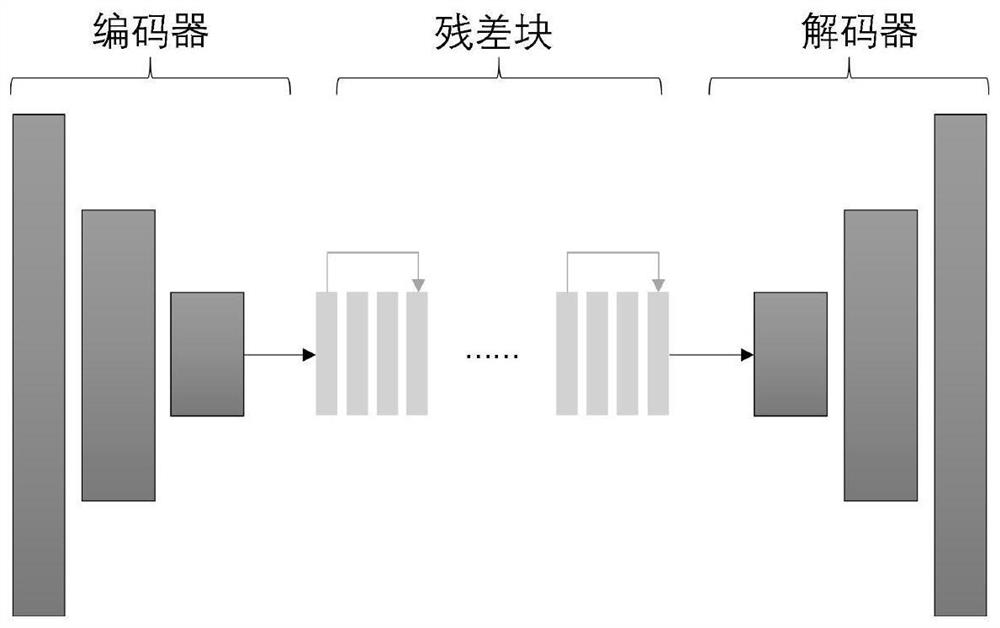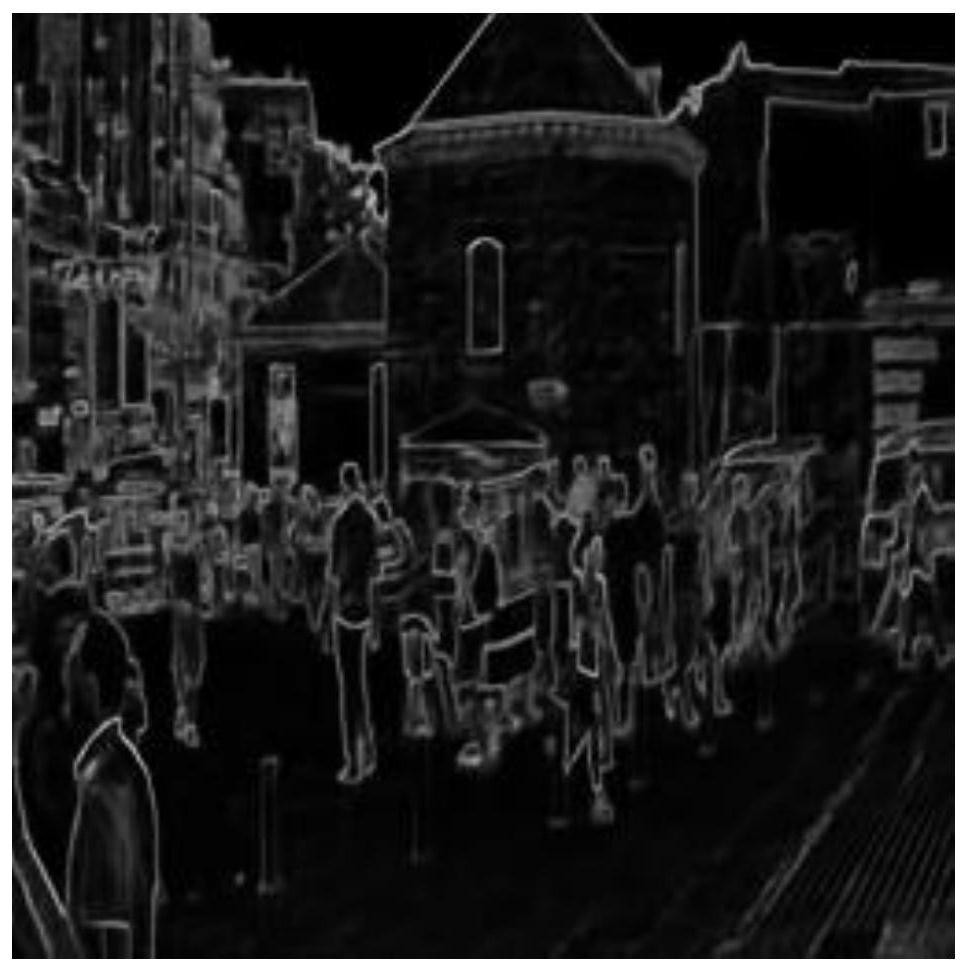Motion blur restoration method based on contour enhancement strategy
A technology of motion blur and repair method, applied in the field of image processing, can solve problems such as inability to extract enough contour information, mixture of contour information and noise signals, unstable content restoration, etc.
- Summary
- Abstract
- Description
- Claims
- Application Information
AI Technical Summary
Problems solved by technology
Method used
Image
Examples
Embodiment 1
[0035] A motion blur repair method based on a contour enhancement strategy, comprising the following steps:
[0036] S1: Sharp edge generation (refer to the sharp edge acquisition framework figure 1 )
[0037] S11: Acquisition of sharp edge information
[0038] The encoder-decoder framework is used to encode the original blurred image blurImg, and then the fine-tuning of the repair network is used to remove the noise information, and finally the decoder network is used to restore the potentially clear contour image sharpEdgePre.
[0039] The encoder here uses the last convolutional output of the VGG16 pre-trained model as the image feature encoding, and uses the residual network to superimpose the upsampling decoder to process the image information and generate sharp edges.
[0040] The encoding information contains image noise information caused by jitter, so the deep learning method is used to filter out the noise information, so that the decoder can restore a clear and no...
PUM
 Login to View More
Login to View More Abstract
Description
Claims
Application Information
 Login to View More
Login to View More - R&D
- Intellectual Property
- Life Sciences
- Materials
- Tech Scout
- Unparalleled Data Quality
- Higher Quality Content
- 60% Fewer Hallucinations
Browse by: Latest US Patents, China's latest patents, Technical Efficacy Thesaurus, Application Domain, Technology Topic, Popular Technical Reports.
© 2025 PatSnap. All rights reserved.Legal|Privacy policy|Modern Slavery Act Transparency Statement|Sitemap|About US| Contact US: help@patsnap.com



